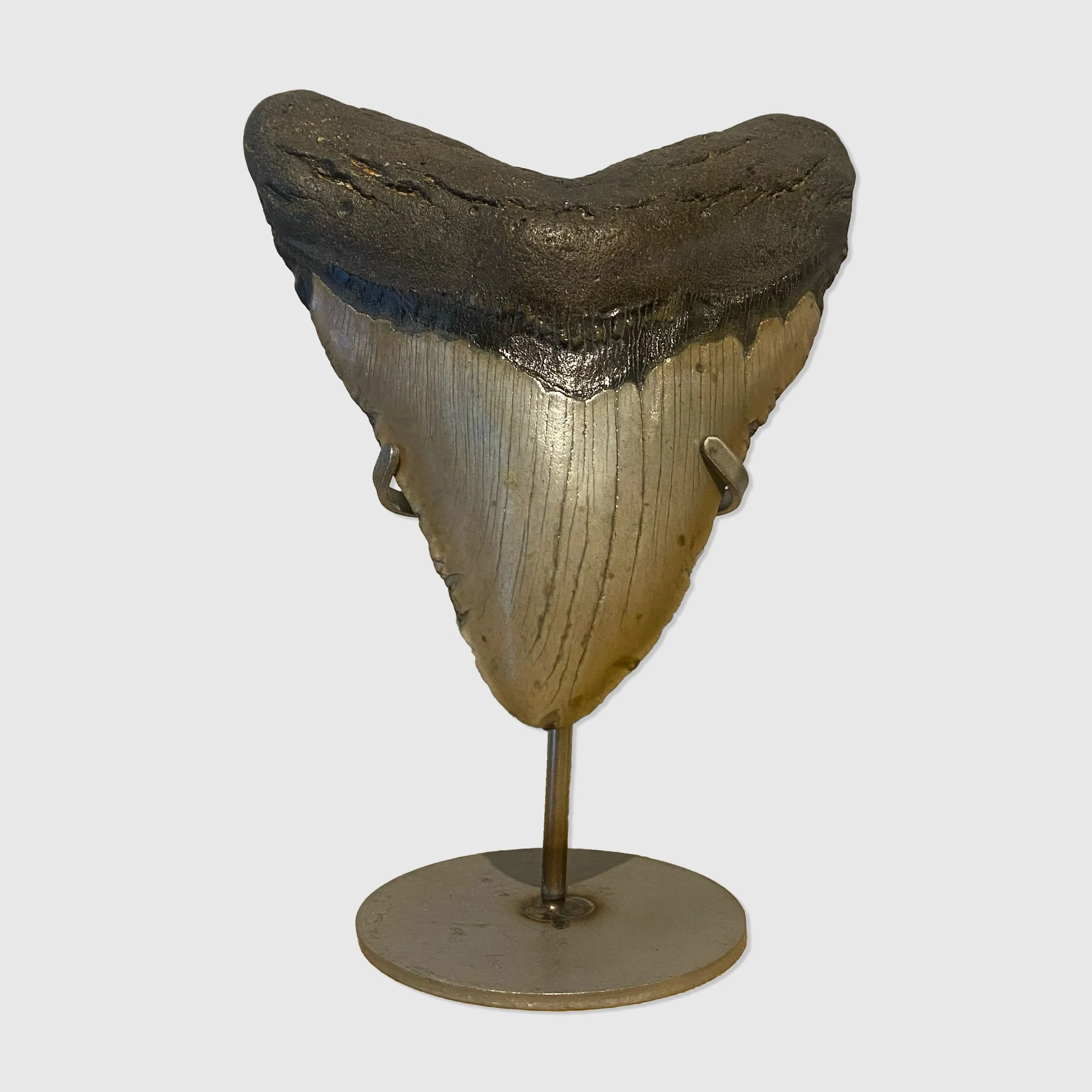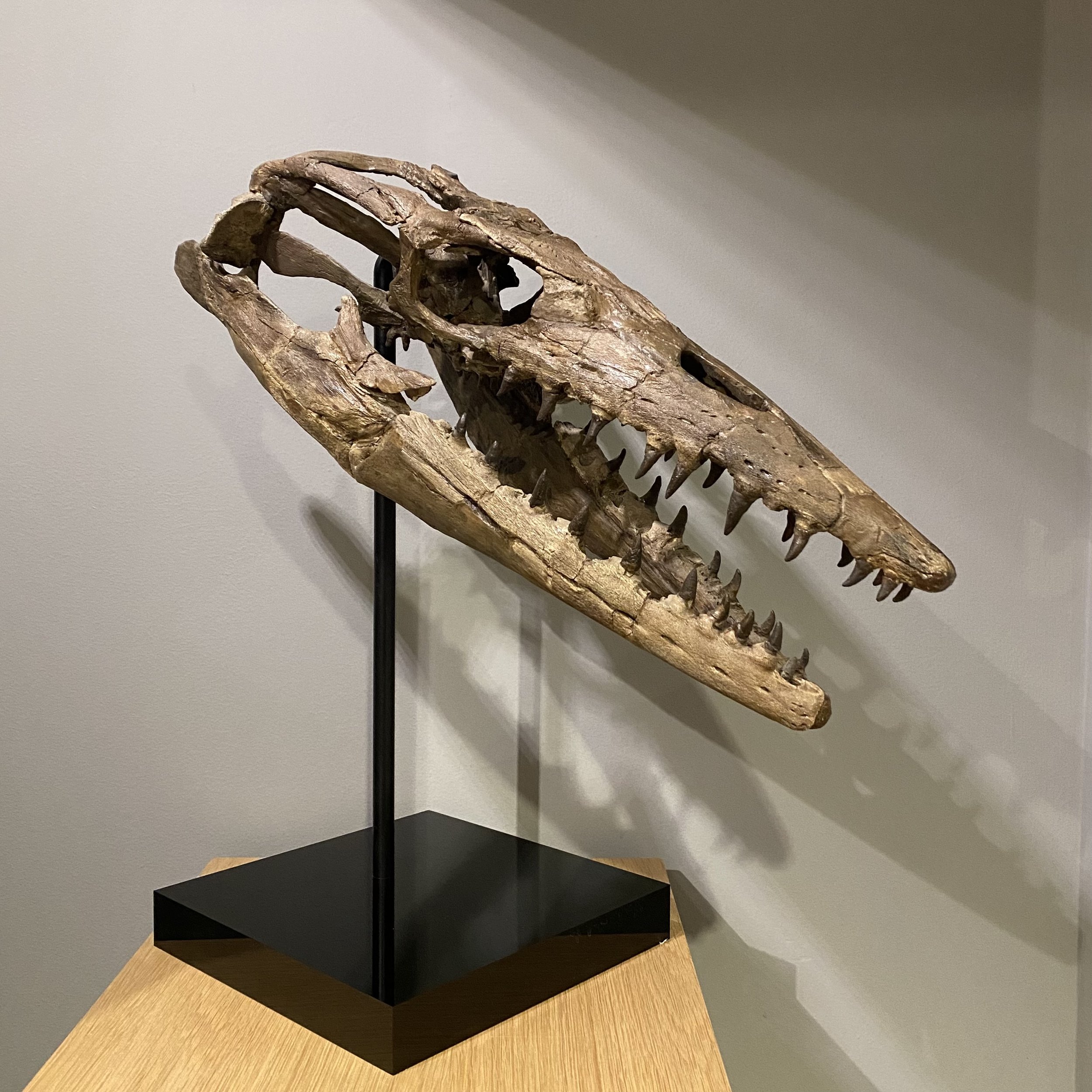Bisected Triceratops Skull





Bisected Triceratops Skull
Bisected Triceratops Skull
Triceratops horridus
Late Cretaceous (68-66 million years ago)
224 x 213 x 84 cm
Hell Creek Formation, Wyoming, USA
Triceratops lived during the late Cretaceous period, about 68 to 66 million years ago in what is now western North America. The name Triceratops, which means 'three-horned face', is derived from the Greek words trí- meaning 'three', kéras meaning 'horn', and ṓps meaning 'face'.
Triceratops is one of the most recognisable of the dinosaurs and was also one of the largest, measuring when fully grown 26–30 ft long and weighing up to 6–10 tonnes.
Numerous discussions have been sparked by the purposes of the frills and three characteristic face horns on its head. These have always been thought of as protective tools against predators. More recent interpretations find it probable that these features were primarily used in species identification, courtship, and dominance display, much like the antlers and horns of modern mammals.
In October 2021, the record price for this collectable fossil was set at Drouot Auction House when ‘Big John,’ the largest triceratops dinosaur ever found, was sold for €6.65 million—far exceeding its estimate of €1.5 million.









